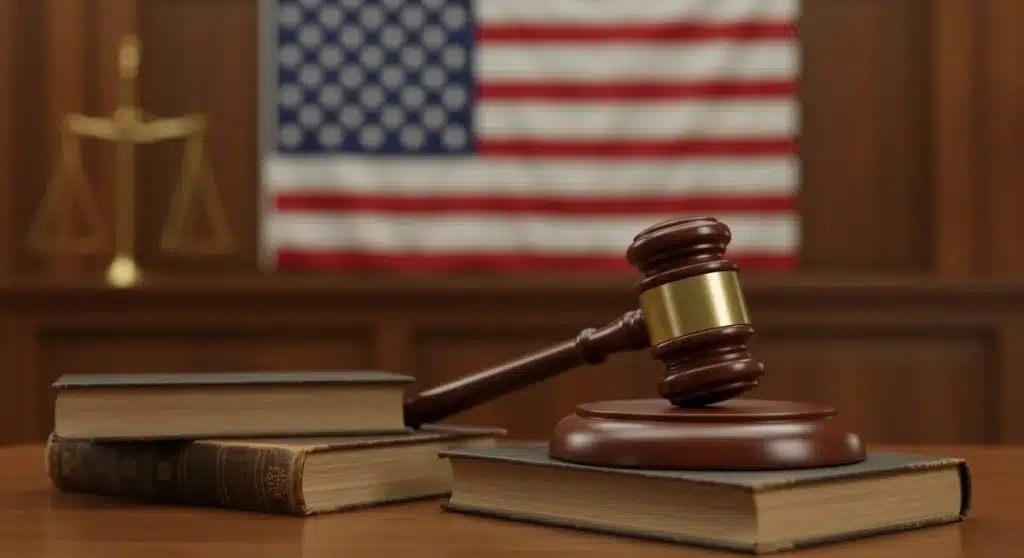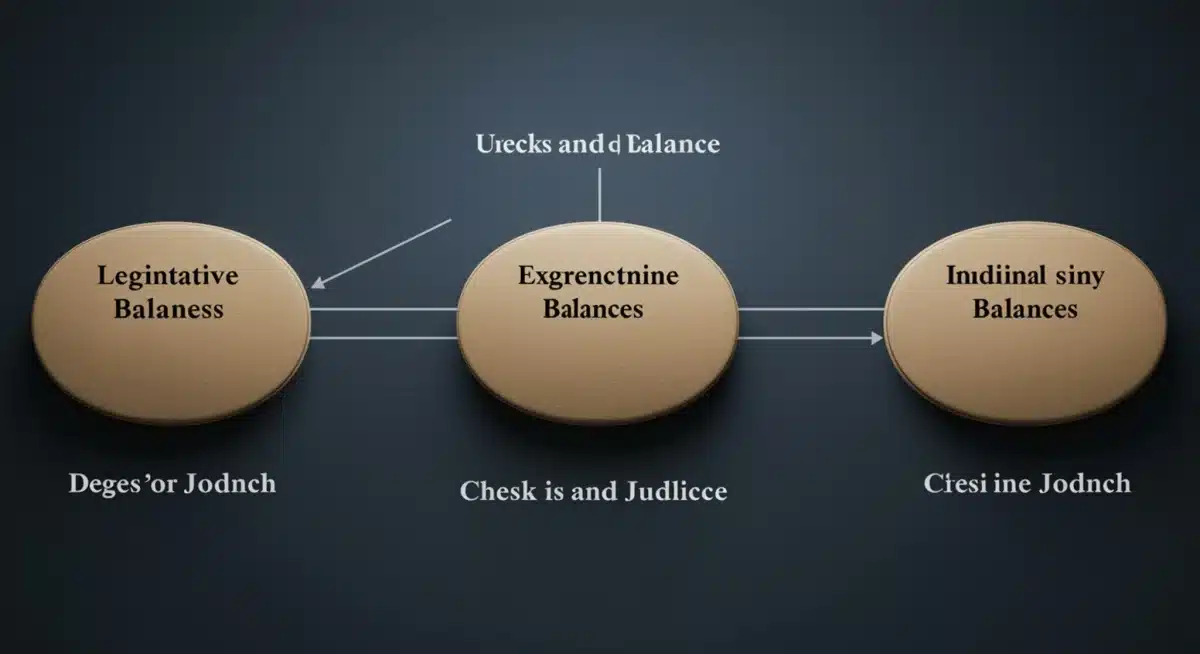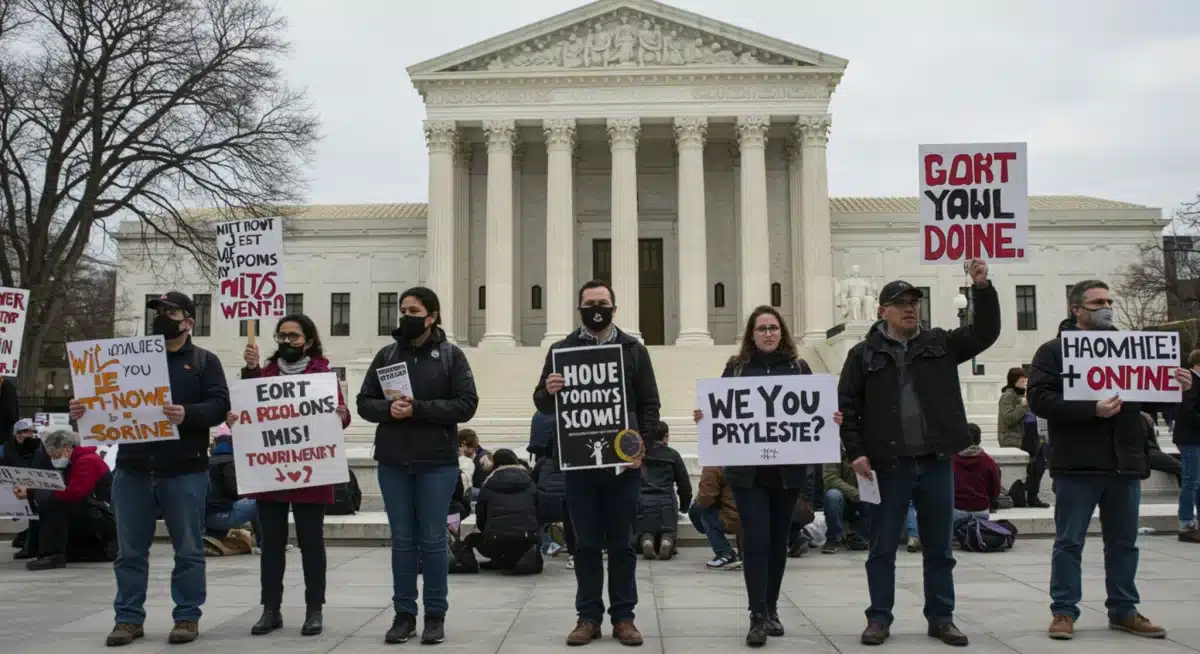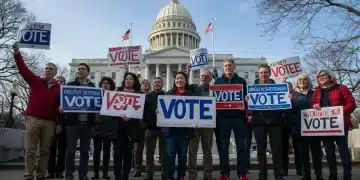Supreme Court Nomination: Impact on Washington’s Power Balance

An upcoming Supreme Court nomination could profoundly alter the judicial landscape and significantly shift the balance of power within Washington, influencing policy direction and legal interpretations for generations.
The question of How Could the Upcoming Supreme Court Nomination Impact the Balance of Power in Washington? is not merely an academic exercise; it is a critical inquiry into the future of American governance and society. Each Supreme Court vacancy presents a pivotal moment, offering an administration the chance to embed its judicial philosophy into the nation’s highest court, thereby influencing legal precedent and policy for decades. This article will delve into the multifaceted ways such a nomination can reverberate through the executive, legislative, and judicial branches, reshaping the political landscape.
The Supreme Court’s Enduring Influence on Policy
The Supreme Court, often perceived as a detached arbiter of law, is in reality a powerful engine of policy. Its decisions shape the daily lives of Americans, impacting everything from healthcare and environmental regulations to civil rights and electoral processes. A new justice, particularly one with a distinctive judicial philosophy, can tip the scales on long-standing precedents or open new avenues for legal interpretation.
Understanding the court’s role beyond simply resolving disputes is crucial. It acts as a final interpreter of the Constitution and federal law, meaning its rulings often establish national policy. For example, decisions on issues like abortion access, affirmative action, or voting rights have broad societal implications that extend far beyond the litigants involved.
Shifting Legal Precedents
One of the most immediate and profound impacts of a new Supreme Court justice is the potential to revisit and either affirm or overturn established legal precedents. This power, known as stare decisis, is not absolute. While the court generally respects prior rulings, a change in its ideological composition can lead to a re-evaluation of past decisions, especially those decided by narrow majorities.
- Constitutional Interpretation: A new justice might adhere to originalism, living constitutionalism, or other interpretive philosophies, fundamentally altering how core constitutional questions are addressed.
- Statutory Interpretation: Different justices may apply varying methods to interpret federal statutes, leading to divergent outcomes in areas like regulatory enforcement or administrative law.
- Rights and Liberties: Changes in the court’s composition can directly affect the scope and protection of individual rights, including freedom of speech, religious exercise, and privacy.
The ideological leanings of a nominee are thus intensely scrutinized, as they provide a strong indicator of how they might approach these critical matters. A conservative justice might favor judicial restraint and states’ rights, while a liberal justice might prioritize federal power to protect individual liberties or promote social equality. These differing approaches can lead to monumental shifts in American jurisprudence.
In conclusion, the Supreme Court’s ability to set national policy through its interpretations makes any nomination a high-stakes event. The philosophical bent of a new justice can reshape the legal framework within which all other governmental branches operate, fundamentally altering the trajectory of American society and law.
The Nomination Process: A Political Battleground
The process of nominating and confirming a Supreme Court justice is inherently political, often becoming a fierce battleground between the executive and legislative branches. It is a moment when the President’s vision for the judiciary clashes with the Senate’s power to advise and consent, reflecting the broader struggle for ideological dominance in Washington.
Historically, Supreme Court nominations have been less contentious, often proceeding with bipartisan support. However, in recent decades, the process has become increasingly polarized, with each party recognizing the long-term impact of judicial appointments. This heightened political intensity transforms a nomination into a litmus test for the President’s agenda and the Senate’s resolve.
Presidential Strategy and Senate Dynamics
A President carefully considers several factors when selecting a nominee. Beyond legal qualifications, ideological alignment and political expediency play significant roles. The President aims to select a candidate who not only possesses impeccable legal credentials but also embodies a judicial philosophy that aligns with their political party’s platform and can garner sufficient support in the Senate.
- Ideological Alignment: Presidents typically seek nominees whose judicial philosophy mirrors their own, ensuring their legacy extends beyond their term in office.
- Age and Longevity: Younger nominees are often preferred, as they can serve for many decades, ensuring a lasting impact on the court’s composition.
- Electability and Appeal: Nominees with broad appeal or those who can galvanize a President’s base are often strategic choices, especially in politically charged environments.
The Senate’s role is equally crucial. The confirmation process involves extensive hearings, where senators scrutinize a nominee’s judicial record, legal opinions, and personal background. This stage is often used by the opposing party to highlight perceived flaws or ideological extremes, aiming to derail the nomination or at least extract political concessions. The majority party, conversely, works to shepherd the nominee through, showcasing their qualifications and suitability.
The current political climate, characterized by narrow partisan majorities and deep ideological divides, means that even a highly qualified nominee can face significant opposition. The balance of power in the Senate, therefore, becomes a critical determinant of a nomination’s success, influencing not only who gets confirmed but also the political capital expended by both sides.

In essence, the nomination process is a high-stakes political chess match. The President’s choice and the Senate’s response are not just about filling a vacancy; they are about shaping the future of American law and reflecting the ongoing struggle for political and ideological control in Washington.
Impact on the Executive Branch’s Agenda
The executive branch, led by the President, has a vested interest in the composition of the Supreme Court. A court that is ideologically aligned with the President’s agenda can be a powerful ally in implementing policy and defending executive actions. Conversely, a hostile court can significantly impede a President’s ability to govern effectively, striking down key initiatives and challenging executive authority.
Presidents often pursue ambitious legislative and regulatory agendas during their terms. These policies, ranging from environmental protections to immigration reforms, frequently face legal challenges. The Supreme Court’s ultimate rulings on these matters can either validate the President’s vision or dismantle it, effectively determining the success or failure of major policy endeavors.
Judicial Review and Executive Power
The power of judicial review means the Supreme Court can declare acts of the President or Congress unconstitutional. This check on executive power is a cornerstone of the American system of government. A court with a different ideological bent might interpret executive orders, agency regulations, or presidential actions differently, leading to significant implications for the executive branch.
- Executive Orders: A more conservative court might be inclined to limit the scope of presidential executive orders, requiring greater congressional involvement.
- Regulatory Authority: The interpretation of federal agencies’ regulatory powers can either expand or constrain the executive branch’s ability to implement policies in areas like climate change or consumer protection.
- National Security: Decisions related to national security, foreign policy, and presidential war powers can be significantly influenced by the court’s ideological makeup.
For a President, a supportive court can provide a crucial backstop, upholding policies that might otherwise be challenged by political opponents or lower courts. This judicial reinforcement can empower the executive branch to pursue its agenda with greater confidence, knowing that its actions are likely to withstand legal scrutiny at the highest level.
Conversely, a court that is consistently at odds with the executive’s philosophy can be a major source of frustration and limitation. It forces the President to either modify their approach, expend significant political capital defending policies, or face the potential invalidation of core initiatives. This dynamic underscores the profound impact a Supreme Court nomination can have on the President’s ability to effectively lead and implement their chosen policies.
Consequences for the Legislative Branch and Lawmaking
The legislative branch, primarily Congress, is also deeply affected by Supreme Court nominations. The court’s decisions can either affirm the constitutionality of new laws or strike them down, forcing Congress to reconsider its legislative strategies. A change in the court’s ideological balance can therefore reshape the legislative landscape, influencing what laws are passed and how they are drafted.
When Congress crafts legislation, it operates within the framework of existing constitutional interpretations. If the Supreme Court shifts its approach to key constitutional questions, Congress may find that previously acceptable legislative approaches are no longer viable. This necessitates a re-evaluation of policy goals and methods, potentially leading to significant delays or alterations in the legislative process.
Congressional Response and Judicial Activism
A Supreme Court nomination can either encourage or discourage Congress from passing certain types of legislation. If the court is seen as sympathetic to a particular ideological viewpoint, Congress might be emboldened to pass laws that align with that view, anticipating a favorable judicial review. Conversely, if the court is perceived as hostile, Congress might shy away from controversial legislation or draft laws with extreme caution to avoid judicial invalidation.
- Legislative Drafting: Congressional legal teams meticulously draft laws to align with anticipated judicial interpretations. A new justice can introduce uncertainty into this process.
- Statutory Ambiguity: When courts interpret ambiguous statutes, they often fill in legislative gaps. A new justice’s interpretive style can significantly alter the meaning and impact of existing laws.
- Checks and Balances: The court’s power to check Congress’s legislative authority is a vital component of the separation of powers, and a new justice can shift the boundaries of this power.
Moreover, a highly polarized Supreme Court can exacerbate partisan divisions within Congress. When court decisions are viewed through a partisan lens, it can intensify debates over judicial appointments and lead to legislative gridlock. This dynamic underscores how a single judicial nomination can ripple through the entire legislative process, affecting not only the content of laws but also the political climate in which they are debated.
Ultimately, the Supreme Court’s composition directly influences the legislative branch’s ability to enact its agenda. A new justice can either clear the path for certain types of legislation or create significant obstacles, thereby playing a crucial role in the success or failure of congressional initiatives.
Public Trust and the Court’s Legitimacy
Beyond the direct impact on governmental branches, a Supreme Court nomination also has profound implications for public trust in the judiciary and the court’s overall legitimacy. When nominations become highly politicized, and decisions appear to align consistently with one political ideology, public perception of the court as a neutral arbiter of justice can erode.
The Supreme Court relies heavily on its perceived legitimacy to ensure its decisions are respected and followed. Unlike the executive or legislative branches, it has no direct enforcement power. Its authority stems from the public’s and other branches’ belief in its impartiality and adherence to the rule of law. A contentious nomination or a series of ideologically driven decisions can significantly undermine this crucial foundation.
Erosion of Public Confidence
The politicization of the nomination process often leads to increased public scrutiny, not just of the nominee but of the court itself. Intense media coverage, partisan debates, and protest movements can contribute to a narrative that portrays the court as just another political body, rather than an independent judiciary. This erosion of public confidence can have long-term consequences for the stability of the American legal system.
- Perceived Partisanship: If the court is seen as consistently favoring one political party’s agenda, it can lose its image as a non-partisan institution.
- Reduced Compliance: A decline in public trust might lead to reduced compliance with court rulings or increased calls for political intervention in judicial matters.
- Institutional Damage: Repeated attacks on the court’s legitimacy, whether from political figures or media, can inflict lasting damage on the institution’s standing.
Furthermore, the public’s view of the court can influence voter behavior and political activism. If citizens believe the court has become too political, it can intensify debates over judicial appointments during elections, making the judiciary a central issue in campaigns. This further blurs the lines between law and politics, potentially trapping the court in a cycle of partisan contention.

In summary, while a Supreme Court nomination is a political act, its handling and the subsequent decisions of the court can either bolster or diminish public trust. Maintaining the court’s legitimacy as an impartial arbiter of justice is paramount for the health of American democracy, making the public perception of each nomination a critical consideration.
Future Implications for American Governance
The long-term implications of a Supreme Court nomination extend far beyond the immediate political wrangling. The judicial philosophy of a new justice can shape American governance for generations, influencing constitutional interpretation, the balance of power among federal branches, and the rights of citizens for decades to come. This enduring impact is what makes every vacancy so critical.
Supreme Court justices serve for life or until retirement, meaning their influence can span multiple presidential administrations and congressional terms. This longevity ensures that the ideological leanings embedded through a nomination can have a profound and lasting effect on the nation’s legal and political trajectory, often outliving the political figures who appointed them.
Enduring Legacy and Constitutional Evolution
A new justice contributes to the court’s collective wisdom and its approach to legal reasoning. Over time, the accumulation of these individual philosophies can lead to a gradual but significant evolution of constitutional law. This evolution is not always predictable, as justices can surprise observers with their rulings or develop their jurisprudence over their tenure.
- Generational Impact: Decisions made today by a newly appointed justice will influence legal education, lower court rulings, and societal norms for future generations.
- Shifting Interpretations: Over time, the court’s interpretation of key constitutional clauses, such as those related to equality or due process, can shift significantly, reflecting the changing composition.
- Institutional Stability: The court’s ability to maintain stability while adapting to societal changes is crucial, and new appointments are central to this delicate balance.
The balance of power in Washington is not static; it is a dynamic equilibrium constantly being recalibrated. A Supreme Court nomination is one of the most powerful mechanisms for recalibration. It can strengthen the hand of one branch over another, or it can introduce new checks and balances that alter how policies are formulated and implemented. This continuous interplay ensures that the constitutional framework remains vibrant, even as its interpretation evolves.
In conclusion, the future implications of a Supreme Court nomination are vast and far-reaching. It is an act that can define a generation of legal thought, redefine the relationships between the branches of government, and ultimately shape the very fabric of American society for decades, underscoring the immense weight carried by each appointment.
Strategies for Navigating Judicial Appointments
Given the immense stakes involved, both the executive and legislative branches employ sophisticated strategies to navigate Supreme Court nominations. These strategies are designed to maximize political advantage, secure desired judicial outcomes, and manage public perception throughout the often-contentious process. Understanding these tactics is key to comprehending the political dynamics at play.
For the President, the strategy begins long before a vacancy occurs, often involving the cultivation of potential nominees and careful vetting to ensure ideological purity and electability. For the Senate, the strategy revolves around either expediting confirmation for preferred candidates or obstructing nominations deemed ideologically unacceptable, depending on which party controls the chamber.
Presidential and Congressional Maneuvers
Presidents often maintain lists of potential judicial nominees, often vetted by conservative or liberal legal organizations, to ensure they align with the party’s judicial philosophy. When a vacancy arises, the President’s team works swiftly to identify a candidate who can not only pass muster with the American Bar Association and other professional groups but also energize their political base and withstand intense Senate scrutiny.
- Public Relations Campaigns: Both sides engage in extensive public relations efforts to frame the nominee in a positive or negative light, influencing public opinion.
- Coalition Building: Presidents work to build bipartisan support, or at least secure enough votes from their own party, to ensure confirmation. Opposition parties work to build coalitions to block nominees.
- Issue Framing: The debate around a nominee often centers on specific hot-button legal issues, allowing both sides to rally their supporters and define the stakes.
In the Senate, the majority party typically sets the pace of the confirmation hearings, aiming to present the nominee in the best possible light. They highlight the nominee’s qualifications, experience, and commitment to the rule of law. The minority party, conversely, often focuses on perceived ideological extremes, past controversial rulings, or potential conflicts of interest, attempting to paint the nominee as unfit for the bench.
The use of procedural tools, such as the filibuster (which has been largely eliminated for Supreme Court nominees) or extended debate, can also be part of congressional strategy to delay or obstruct a nomination. These tactics underscore the high-stakes nature of judicial appointments, where every procedural advantage is leveraged to achieve a desired political and judicial outcome.
In conclusion, navigating Supreme Court appointments requires a blend of legal acumen, political strategy, and public persuasion. Both the President and Congress deploy a range of tactics to ensure their preferred judicial philosophy is represented on the nation’s highest court, reflecting the deep and enduring impact these nominations have on the balance of power in Washington.
| Key Impact Area | Brief Description of Impact |
|---|---|
| Judicial Philosophy | Reshapes constitutional and statutory interpretation for decades. |
| Executive Agenda | Can uphold or dismantle presidential policies and executive orders. |
| Legislative Authority | Influences what laws Congress can pass and how they are drafted. |
| Public Trust | Affects the court’s perceived legitimacy and non-partisanship. |
Frequently Asked Questions About Supreme Court Nominations
A Supreme Court nomination begins when a justice retires, resigns, or passes away, creating a vacancy. The President then nominates a candidate, often after extensive vetting and consultation with legal and political advisors, to fill that seat on the nation’s highest court.
The Senate plays a crucial “advise and consent” role. Nominees undergo hearings before the Senate Judiciary Committee, followed by a full Senate vote. A simple majority is typically required for confirmation, though procedural hurdles can arise.
A new justice can shift the court’s ideological balance by replacing a justice with a different judicial philosophy. For example, a conservative replacing a liberal justice can move the court to the right, impacting decisions on key issues for decades.
Absolutely. Supreme Court decisions have far-reaching effects on daily life, influencing rights related to healthcare, privacy, voting, environmental protection, and many other areas, often setting national policy for all citizens.
Lifetime tenure allows justices to make decisions free from political pressure and electoral cycles. However, it also means a single nomination can shape legal precedent and constitutional interpretation for several decades, making each appointment profoundly impactful.
Conclusion
The upcoming Supreme Court nomination stands as a critical juncture for American governance, with the potential to fundamentally reshape the balance of power in Washington. From altering the ideological leanings of the nation’s highest court to influencing the executive and legislative branches’ ability to enact their agendas, the ripple effects will be profound and long-lasting. This process is not merely about filling a judicial vacancy; it is a high-stakes political and legal battle that will define the trajectory of American law, policy, and societal norms for generations to come. The careful consideration and strategic maneuvering by all involved parties underscore the immense significance of who ultimately sits on the Supreme Court bench.





